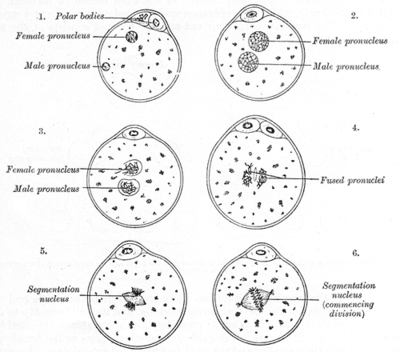Pronucleus

A pronucleus (pl.: pronuclei) denotes the
diploid nucleus in the resulting embryo
, which contains a complete set of 46 chromosomes.
The presence of two pronuclei serves as the initial indication of successful fertilization, often observed around 18 hours after
selection of embryos
during in vitro fertilization (IVF) procedures.
History
The pronucleus was discovered the 1870s
polar bodies.[2]
Formation
The female pronucleus is the female egg cell once it has become a
microtubules so only the male pronucleus migrates towards the female pronucleus.[6]
Calcium concentration
The calcium concentration within the egg cell cytoplasm has a very important role in the formation of an activated female egg. If there is no calcium influx, the female diploid cell will produce three pronuclei, rather than only one. This is due to the failure of release of the second polar body.[7]
Combination of male and female pronuclei
In sea urchins, the formation of the
mitotic spindle. The diploid nucleus in mammals is first seen at the two-cell stage, whereas in sea urchins it is first found at the zygote stage.[3]
References
External links
Look up pronucleus in Wiktionary, the free dictionary.
